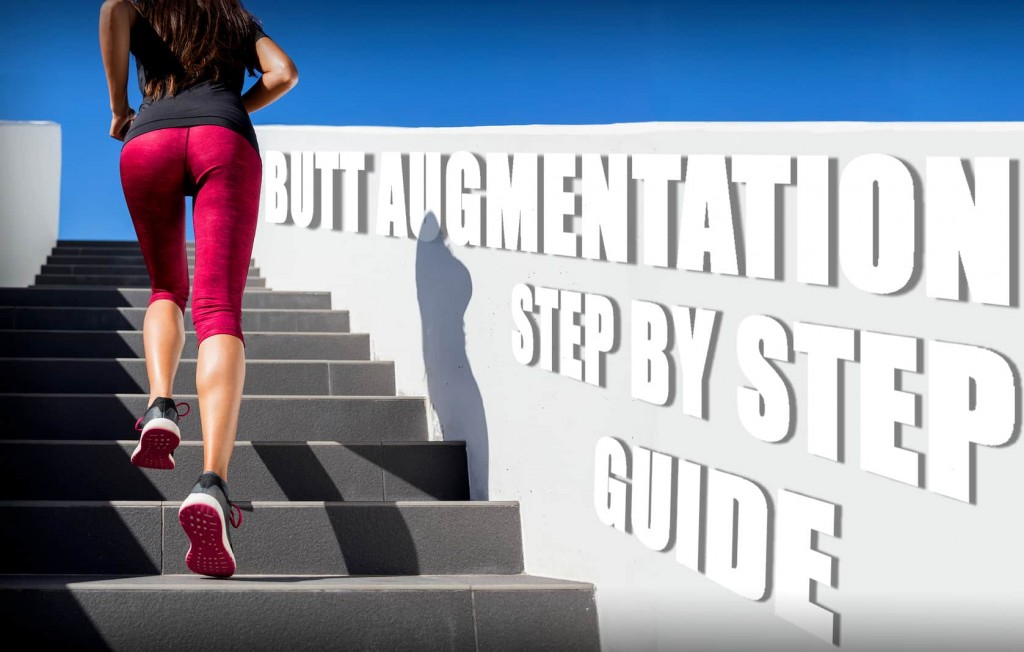Step by Step Guide to Buttock Augmentation

Butt augmentation enhances the size, shape and contour of the buttocks through implants or fat grafts. The implants are made of a firm, cohesive silicone gel while fat grafting is often referred to as fat injections or the Brazilian butt lift (BBL). A BBL is limited by the amount of fat which can be harvested from the patient’s own body but the procedure can be combined with implants to maximize the results. Knowing how butt augmentation is performed can help patients decide which option is best to achieve the desired results.
Buttock Implants Process
- Implants are performed as an outpatient surgery that generally takes between two to three hours.
- Prior to the surgery, the patient is given anesthesia.
- The surgeon makes an incision via one of several methods. The incision can be placed:
- Within the natural crease where the cheeks meet the back of the thighs
- Horizontally along the top of the upper buttock where the cheeks meet the lower back
- Between the buttock cheeks located along the crease
- Down the sacrum or the crease between the buttocks
- After the incision is made, the surgeon creates a large enough pocket to hold the implant in place. The pocket can be above or below the gluteal muscle but is generally created beneath the muscle to provide more natural looking results.
- The implant is carefully placed in each pocket and the surgeon ensures that the cheeks are symmetrical.
- Layered sutures are used to close the inner tissue around the implant. Sutures, skin adhesives or surgical tape is used to close the skin.
- A compression garment is placed on the patient to aid in the healing process.
- The results will be immediate but it can take some time for all of the swelling to dissipate.
Brazilian Butt Lift Procedure
- A Brazilian butt lift is performed as an outpatient surgery and normally takes between two to three hours.
- The procedure can be performed under general anesthesia or IV sedation.
- The surgeon makes tiny incisions for the removal of excess fat via liposuction. Fat can be removed on areas such as the abdomen, thighs, love handles and back.
- A solution containing epinephrine, saline and lidocaine (as a local anesthetic) is placed into the treatment area via IV to numb the area as well as reduce bleeding and trauma.
- The surgeon inserts a thin and hollow tube called a cannula into the subcutaneous layers of fat through the incisions. The surgeon loosens the excess fat with the cannula via a controlled back and forth movement.
- A surgical vacuum or syringe is attached to the cannula which suctions out the dislodged fat.
- The surgeon may need to use several donor areas to obtain enough fat for the transfer. Up to three times the amount of fat and fluids will be removed but only a portion will be suitable for reinjection into the buttocks.
- Sutures are typically not needed since the incisions are very small. Surgical tape and dressing may be used to cover the wound.
- The blood, tissue and fat removed during liposuction are carefully processed using a centrifuge machine. The machine rapidly rotates and uses force to separate its contents.
- The viable fat is infused with antibiotics prior to reinjecting.
- The surgeon connects syringes to a special cannula and injects the purified fat into the buttocks at various depths throughout the cheeks. The patient may receive between 580cc to 1000cc of injectable fat per cheek depending on the amount of fat available.
- A compression garment is placed on each treated area including the areas that had liposuction to aid in the recovery process.
- The results are immediate but it can take up to a year for the fat to stabilize and the results to be final. The volume from the injections that patients initially experience may fade since a portion of the injected fat might be absorbed by the body. On average, patients will retain approximately 60-80% of the transferred fat.
-SP
